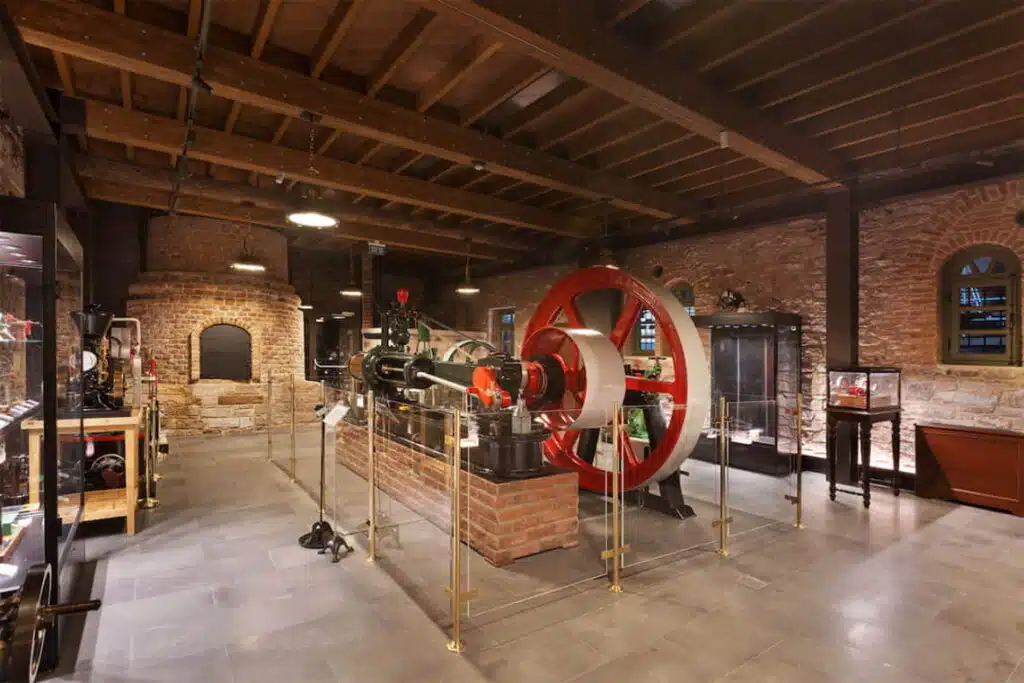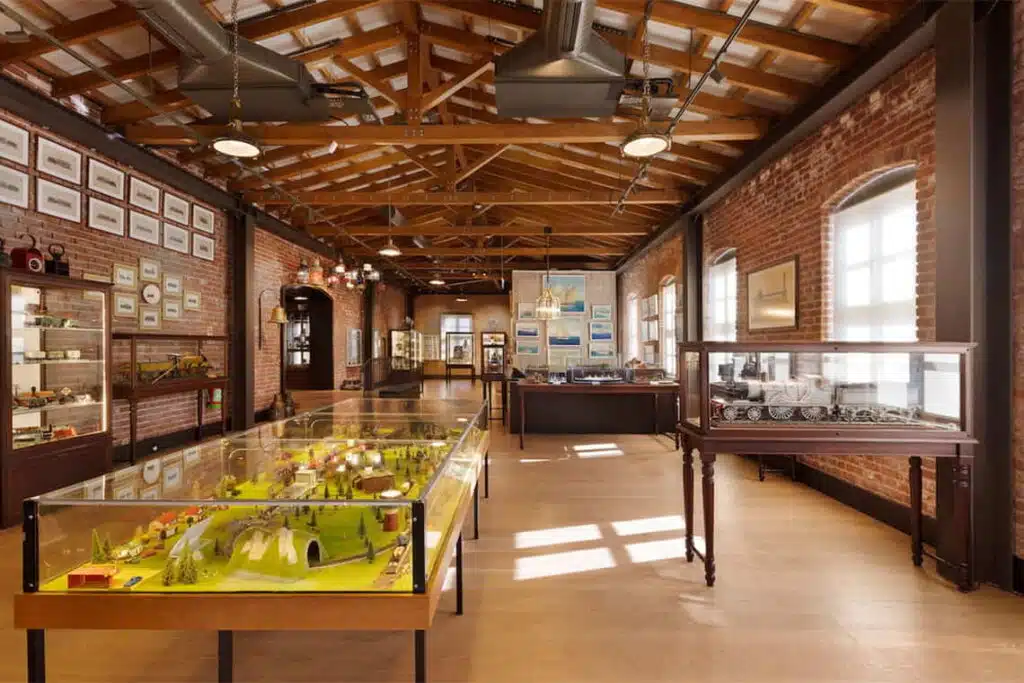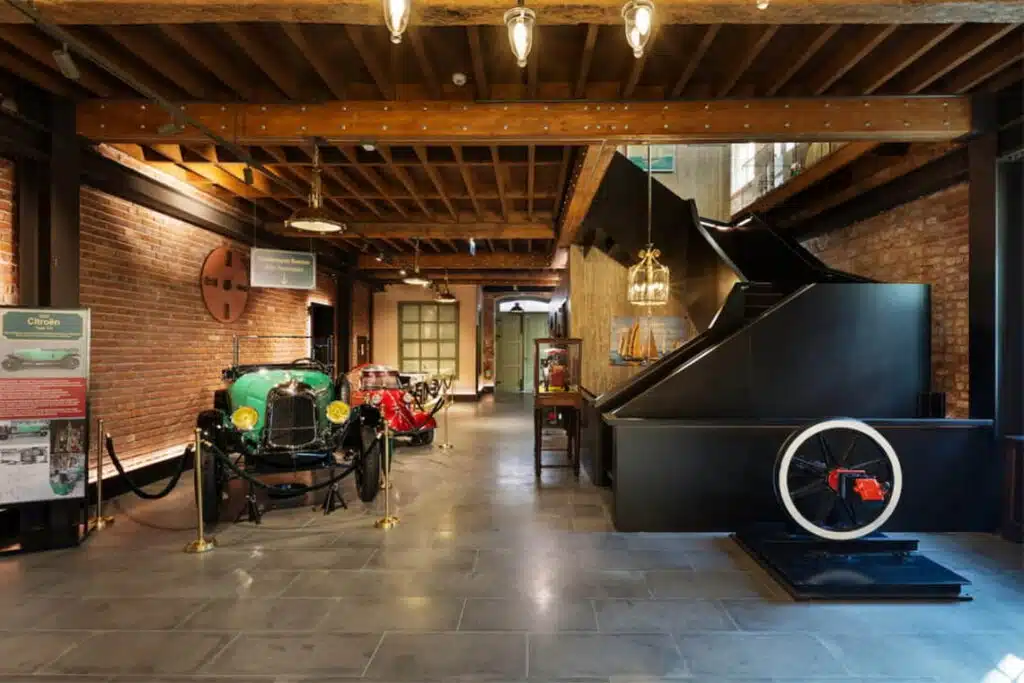The industrial production of Ayvalık, the pearl of the Aegean, is kept alive by the Rahmi M. Koç Museums. As a result of a general restoration, 200-year-old historical factories will open their doors as the Ayvalık Rahmi M. Koç Museum on January 19th. Archaeological artifacts can be seen in the museum, which consists of outstanding examples of the collection from around the world.
Fourth Industrial Museum of Koç
Rahmi M. Koç Museum, Turkey’s first and only industrial museum reflecting the developments in the history of transportation, industry and communication, has brought a new museum to the world of culture and arts. Following the three museums in Istanbul, Ankara and Cunda, Ayvalık Rahmi M. Koç Museum will present distinguished examples of world industrial history to its visitors.
Arriving in Ayvalık to inaugurate the 200-year-old olive oil factory in Ayvalık, which has been revived with a comprehensive restoration and opened as the Ayvalık Rahmi M. Koç Museum, Koç Holding Honorary Chairman Rahmi Koç visited Ayvalık Mayor Mesut Ergin at his office. Stating that they were very happy and honored to host Rahmi Koç in Ayvalık and the historical municipality building, Ayvalık Mayor Mesut Ergin said, “The devotion and effort you have shown to our city has set an example for everyone in Turkey and Ayvalık. As the people of Ayvalık, we would like to thank Rahmi Koç for his countless contributions to the development of our district with his work on transferring the city’s culture to future generations; and for the valuable works he has brought to our city.” Koç Holding Honorary Chairman M. Rahmi Koç congratulated Mayor Mesut Ergin on his election as mayor for the second time and wished him success. Rahmi Koç expressed that Ayvalık Mayor Mesut Ergin provided great support and contributions during the restoration of the museum and also thanked Mayor Ergin.

It Appeals to All Ages with Its Rich Collection
The ground floor of the museum, which will open its doors on January 19, contains valuable objects including classic cars, motorcycles, baby carriages and steam engine models. In the upper floor exhibition area of the building, there are valuable locomotive models, toys and maritime-related objects. Various archaeological artifacts can also be seen in the collection, which was created similar to the Istanbul, Ankara and Cunda Rahmi M. Koç Museums.

It was Restored while Preserving Its Construction Techniques
The building where the museum is located is one of the most important industrial heritages of Ayvalık with its 200-year history. The building, which is an example reflecting the architectural features of the courtyard-less type factories built in the city in the 19th century, is surrounded by the factory building, grid system building islands and perpendicular streets intersecting each other in a pattern. The factory, which consists of two parts: oil mill and soap mill, was built by placing wooden floor beams inside masonry walls. The factory, which reached its most advanced state in the 1950s since its establishment, fell out of use in the early 2000s and suffered various damages over time. In 2021, RMK Cultural Activities Inc. was acquired by Ark İnşaat A.Ş. The repair of the building was carried out by preserving the original materials and construction techniques. After the meticulous restoration work, it was brought to Ayvalık with a concept focused on culture and art.

Take a Break with the Unique Ayvalık View
Ayvalık Rahmi M. Koç Museum can be visited between 10:00 and 17:00, except on Mondays. The cafe of the museum located on the seaside will serve as a unique place where both museum visitors can take a breather to relieve their tiredness and outside guests can spend time in the pleasant and enjoyable atmosphere of the museum and add pleasure to their days with the flavors offered. Gift items designed specifically for the collection can be purchased from the store at the museum entrance.
